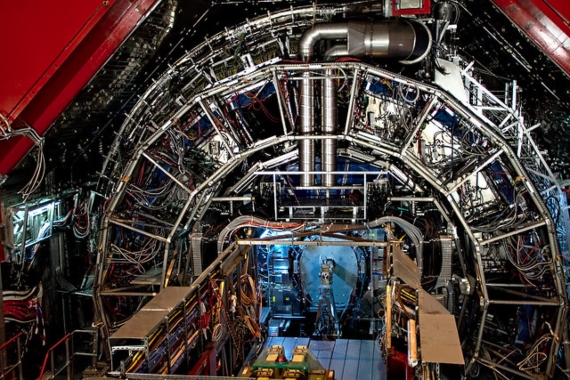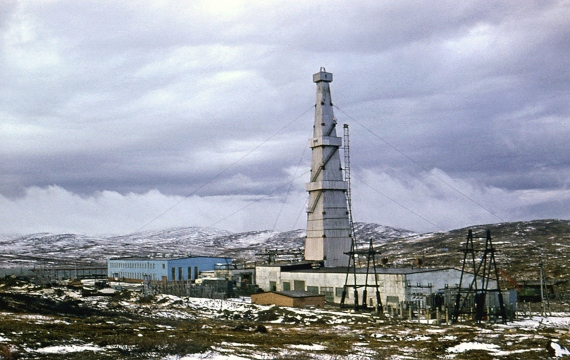We owe so much of our modern world to technology that trying to list all the advances that have improved our lives would likely set some sort of a record. But when it comes to records, technological progress has allowed us to break some of them, reaching limits that only a few decades ago science would have considered impossible. Here we review some of these scientific records achieved thanks to human talent and ingenuity, which so far seem to have no limits.
The highest temperature achieved
In 2012, a curious competition was established between two scientific facilities whose purpose is not to try to break records. On June 26, the Brookhaven National Laboratory (BNL) in the USA announced that the Guinness World Records organisation (GWR) had granted it the record for the highest temperature ever achieved: collisions of gold ions travelling at almost the speed of light in the Relativistic Heavy Ion Collider particle accelerator had formed a plasma at 4 trillion degrees Celsius, 250,000 times hotter than the centre of the Sun, the BNL boasted.

But their celebration was short-lived. BNL itself warned that CERN’s Large Hadron Collider (LHC) in Switzerland was about to set an even higher mark, which is just what happened. On August 13, those in charge of the ALICE experiment at the LHC announced their new record: 5.5 trillion degrees Celsius, a record that has yet to be broken according to GWR. And since similar conditions have only existed in nature in the instant immediately after the Big Bang, it is assumed that this is the highest temperature in the current universe… as far as we know.
The lowest temperature achieved
Although the highest temperature that matter can reach is calculated at almost 1,420 quintillion degrees Celsius —the so-called Planck temperature— the limit of maximum cold is much closer: absolute zero, zero kelvins in the international system of units, is estimated at -273.15 degrees Celsius.
And yet, it is physically unattainable: since temperature is a consequence of the movement and energy of atoms, absolute zero would involve stopping them and extracting all their energy, so it is only possible to approach an infinitesimal fraction above zero kelvins. Currently, the GWR record is held by sodium gas cooled to 450 picokelvins (trillionths of a kelvin) in 2003 at the Massachusetts Institute of Technology.

However, something even stranger than absolute zero has been achieved. In 2013, researchers from the Max Planck Institute and the University of Munich obtained negative temperatures, nanokelvins below absolute zero. This is possible in certain controlled systems where negative pressure is forced; atoms are attracted instead of repelled. The consequences are equally unusual: these systems give heat to other bodies instead of stealing it. Researchers explain that the temperature scale is not linear but circular, so a negative temperature in reality is hotter than a positive temperature of infinite value.
The fastest human device
The current speed record recognized by GWR for a human manufactured device was set on November 6, 2018, when NASA’s Parker Solar Probe reached 95.3278 km/s or 343,180 km/h (relative to the Sun) in its first perihelion, the point of closest approach to the Sun. However, this will be an ephemeral record. This spacecraft, designed to study the solar corona, will complete a total of 24 perihelia until 2025, progressively approaching the Sun at the smallest distance ever reached by a scientific mission. As it tightens its circle around the star, the assistance of gravity will increase its speed in the perihelion. It is expected to reach a speed of 192 km/s or 690,000 km/h, representing 0.064% of the speed of light.

The highest voltage produced by a man-made device
While it took us humans centuries of technological progress to dominate electricity, any storm unleashes a power that is still unattainable by our means. Recently, a team of researchers from India and Japan published the measurement of the highest electrical potential ever recorded in a storm: 1.3 gigavolts, or 1.3 billion volts. At the moment, our record is much humbler, if impressive enough. In May 1979, during tests of a 30-metre high tandem electrostatic accelerator at the Oak Ridge National Laboratory in the USA, a voltage of 32 million volts was produced, a record that still seems to be in force.

The deepest hole in the Earth
If in some areas the technological achievements of human beings are spectacular, in others they may seem rather pitiful, although one must take into account the magnitude of the challenges involved. An example of this is the deepest depth to which humans have managed to penetrate the planet, set in 1989 at just over 12,200 metres in the so-called super-deep well of Kola, in Russia. The project was a by-product of the Cold War, when both powers struggled to break the record for the deepest exploration in the bowels of the Earth. Drilling in Kola began in 1970 and continued until the fall of the Soviet Union.

Curiously enough, although the hole of Kola, 23 centimetres in diameter, remains the deepest, it is no longer the longest; since 2017, the current record has belonged to an oil well drilled by the Sakhalin-1 consortium in the sea of Okhotsk, in eastern Russia, with a total of 15,000 metres. Although these depths far exceed the greatest that can be found in the oceans, they only represent a mere 0.2% of the distance to the Earth’s core.
The most distant cosmic object
It is almost paradoxical that we have barely begun to scratch the crust of our own planet, yet our instruments have managed to observe a galaxy located at the spine-chilling distance of 32 billion light years. This is currently the record for the oldest and farthest observed galaxy, GN-z11, in the constellation of Ursa Major (Great Bear). The finding, announced in March 2016, was achieved thanks to data from the Hubble Space Telescope, which was pushed to the limits of its abilities. The image shows the galaxy as it was 13.4 billion years ago, the time it took for its light to reach us, and only 400 million years after the Big Bang, in the infancy of the universe. The estimate of the actual distance is much greater due to the added effect of the expansion of the universe.
Comments on this publication